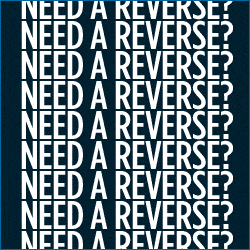Are You Calculating Defaults Wrong?
David Roitblat is the founder and CEO of Better Accounting Solutions, an accounting firm based in New York City, and a leading authority in specialized accounting for merchant cash advance companies.To connect with David or schedule a call about working with Better Accounting Solutions, email david@betteraccountingsolutions.com.
As we dive into tax season, it’s crucial for those involved in the merchant cash advance (MCA) industry to have a solid grasp of how to account for defaults. The way defaults are measured can significantly influence financial reporting and tax obligations, so understanding the different perspectives is essential.
There are several ways to evaluate defaults in the MCA industry, each offering different benefits depending on the context.
One common approach is the Right-to-Receive (RTR) perspective, which looks at the difference between the total payback amount agreed upon in a deal and what has actually been repaid.
For example, if a business secures $100,000 with a payback obligation of $150,000, and it repays $135,000, then there’s a remaining $15,000 that constitutes a default—a 10% shortfall from what was expected. This method is excellent for highlighting the gap between expected and actual returns, making it a valuable tool for financial modeling and long-term forecasting.
However, while the RTR method is strong for assessing contractual obligations, it can sometimes feel a bit too rigid. It often overlooks the real-world dynamics of cash flow and the impact of fees, which can give a skewed picture of a deal’s financial health.
Another method is the cash perspective. The approach simplifies things by focusing on whether the initial funding amount has been recovered. Using the same example, if the client repays $135,000, there’s no default recorded since the principal has been recovered. But if only $75,000 is paid back, that’s a 25% default based on the original funding. This approach is particularly handy for tax reporting because it zeroes in on principal recovery without complicating the picture with profit margins.
While straightforward, the cash perspective has its drawbacks. It tends to gloss over important details like origination fees and the overall financial implications of the repayment agreement, which can lead to an incomplete understanding of the deal.
Next, we have the wire perspective, which considers the actual amount transferred to the client after any deductions, such as origination fees. For instance, if a client gets $100,000 but pays a 10% origination fee, they effectively receive $90,000. If they then repay $75,000, the default is calculated based on the wired amount, leading to a 16.66% default rate. This perspective is particularly useful in syndication agreements, where understanding profitability post-fees is crucial.
Yet, like the cash perspective, the wire approach may miss the broader financial picture, focusing too narrowly on fees without accounting for total contractual expectations.
Each of these methods has strengths and weaknesses, but a comprehensive understanding of defaults requires a more detailed approach.
The percentage of payback perspective is the solution, calculating defaults based on the total percentage of the expected payback received.
In a scenario where the RTR is $150,000 and $135,000 is repaid, the default is 10% of the total payback amount. This method accounts for historical trends and repayment behaviors, offering valuable insights for portfolio management and financial forecasting. It allows us to estimate defaults based on historic defaults and post a percentage of the payback as the payments come as defaults. By incorporating both RTR obligations and cash flow realities, it balances the limitations of other methods.
For tax purposes, the cash perspective is practical, recognizing defaults as the shortfall between the funded amount and repayments. However, it oversimplifies the complexities of MCA financing by neglecting origination fees and RTR contracts. Similarly, the RTR perspective, while excellent for identifying contractual gaps, can be too rigid for broader financial analyses, as it does not consider upfront deductions or actual cash flow timing.
The percentage of payback perspective addresses these shortcomings, making it the most effective method for evaluating defaults across all scenarios.
A significant advantage of the percentage of payback perspective is its flexibility for financial projections.
Businesses can use past repayment data to estimate default rates across different portfolios, helping them align with long-term profitability goals. This is especially important in the merchant cash advance industry, where repayment patterns can vary widely. It also works well for situations involving origination fees or syndication agreements, ensuring those fees are factored into default calculations. By doing so, it avoids the distortions seen in cash- or RTR-focused analyses and provides clearer reporting for syndication partners on how their investments are performing. Although this approach requires more effort, its ability to offer accurate and nuanced insights makes it essential for MCA companies in today’s complex financial landscape.
This tax season, understand your accounting options, and leverage them to help you kick off an amazing 2025.
Last modified: January 22, 2025David Roitblat is the founder and CEO of Better Accounting Solutions, an accounting firm based in New York City, and a leading authority in specialized accounting for merchant cash advance companies.
To connect with David, email david@betteraccountingsolutions.com.































